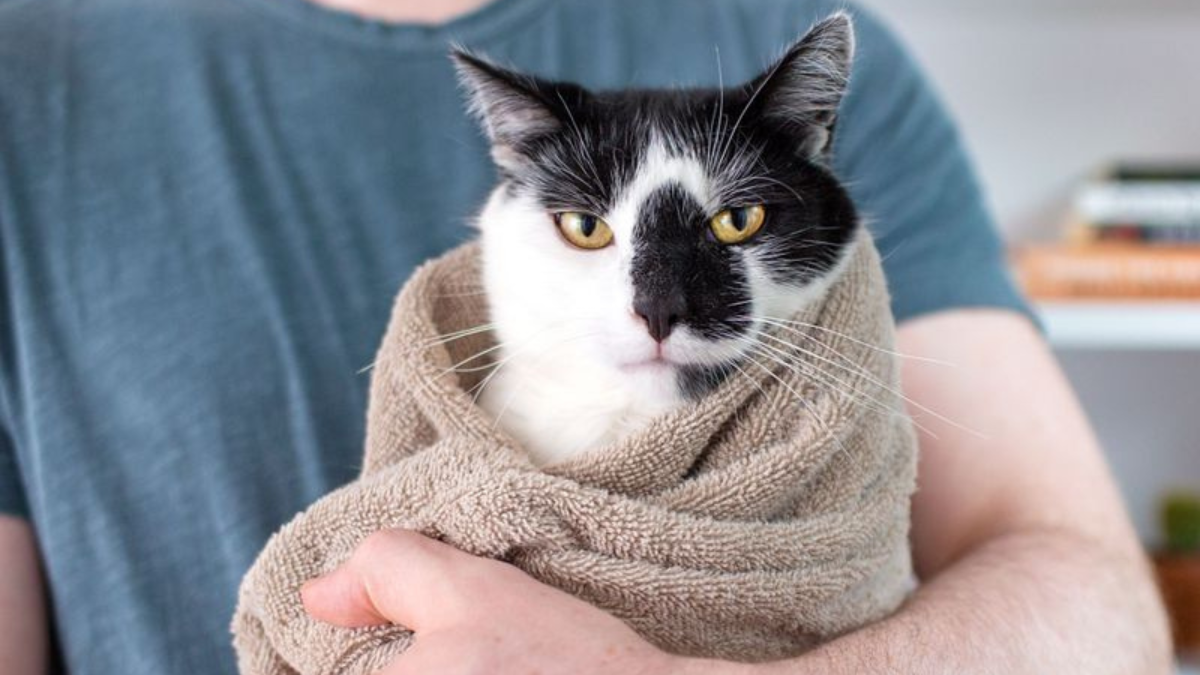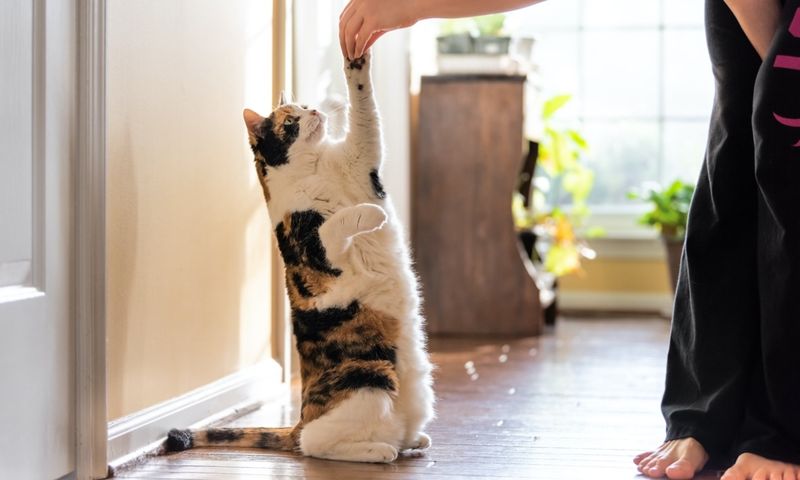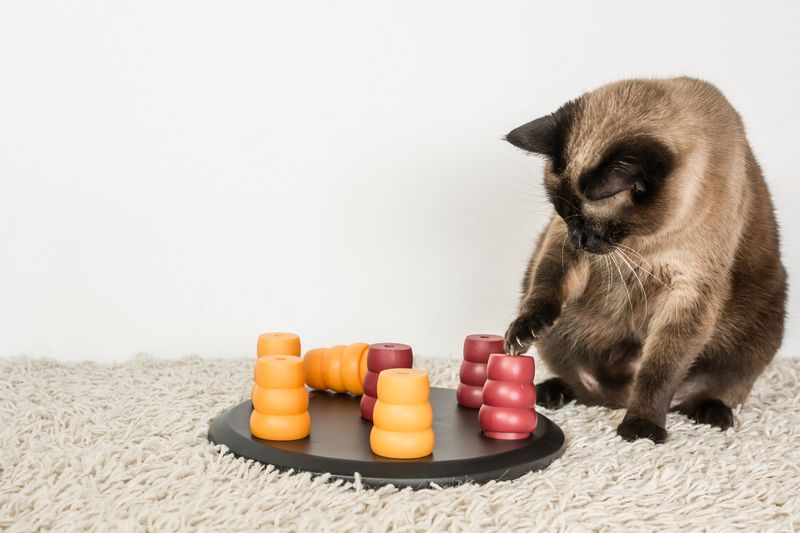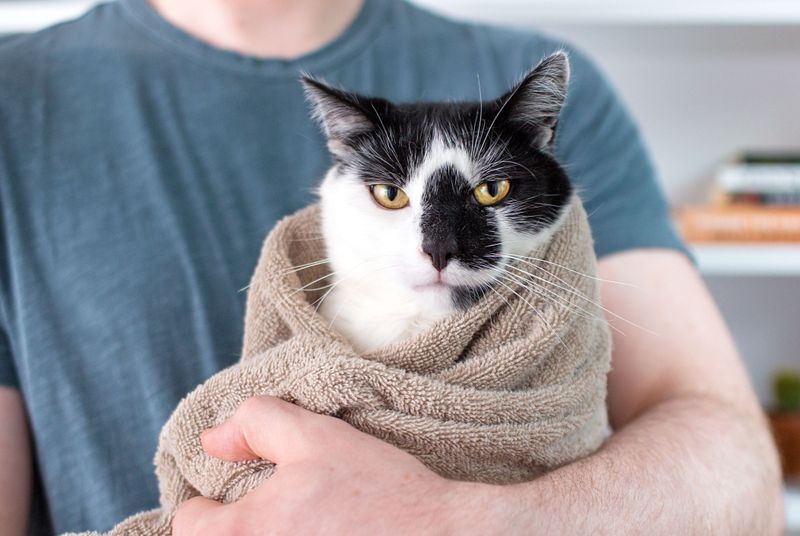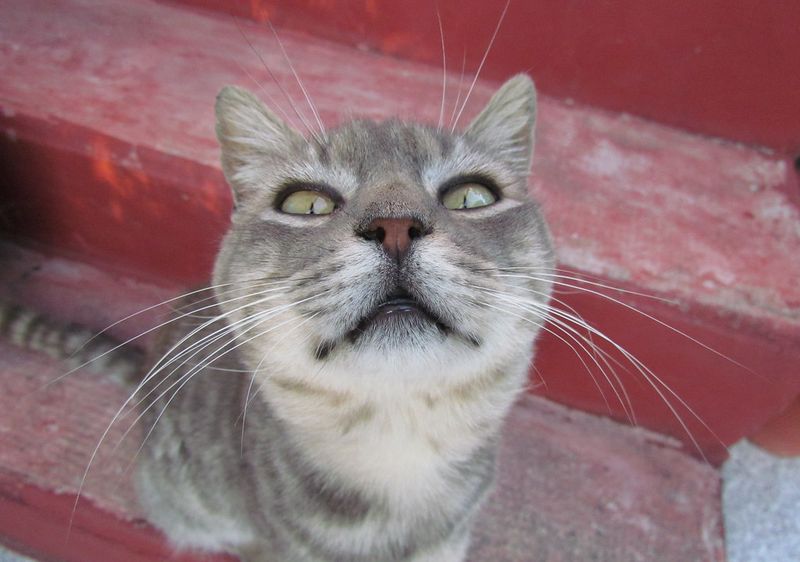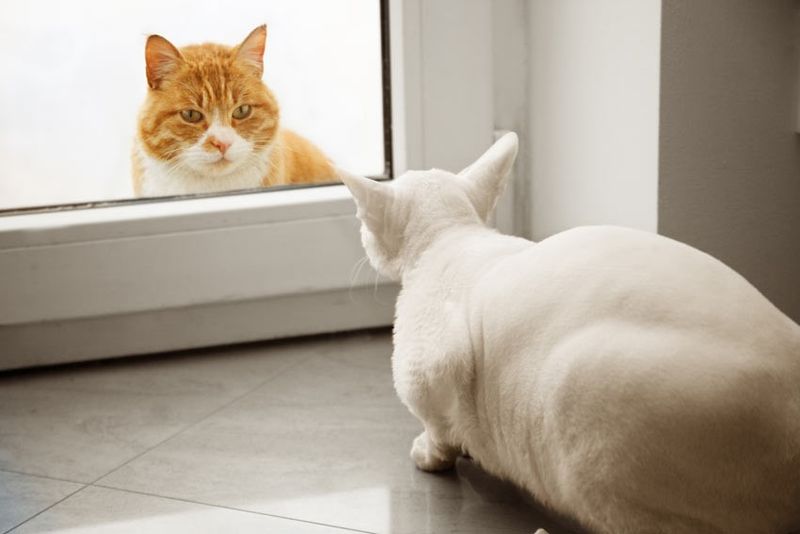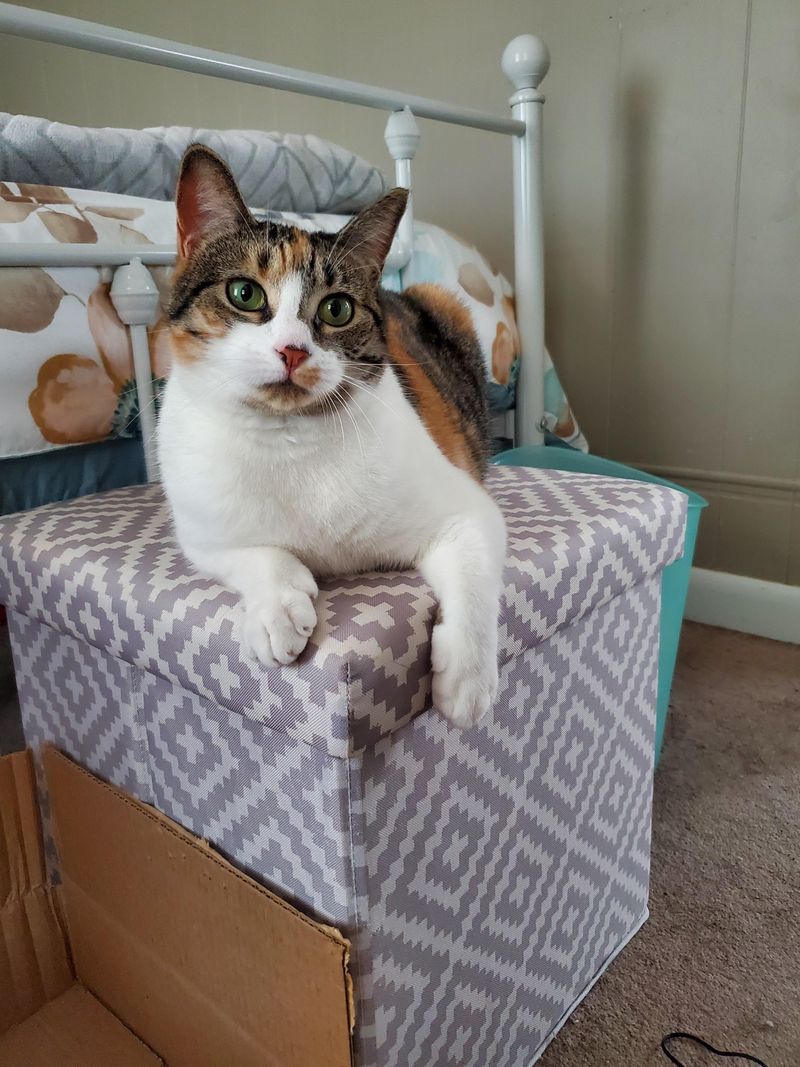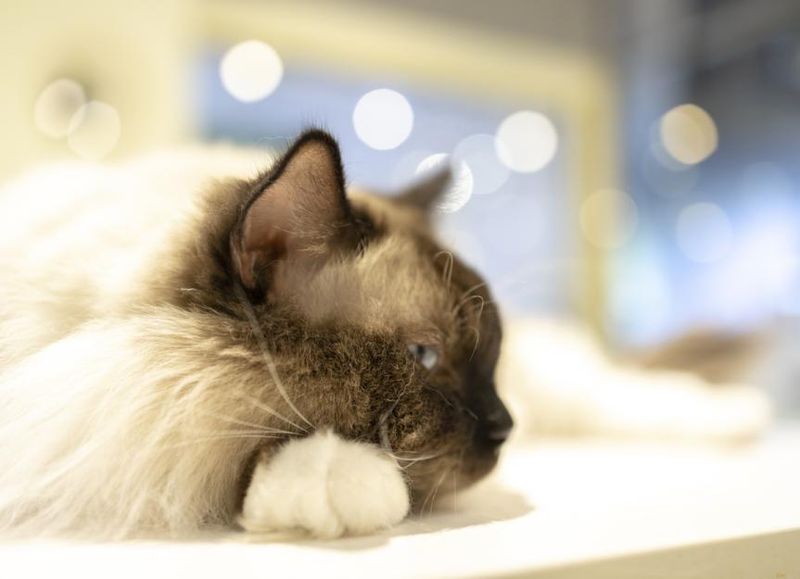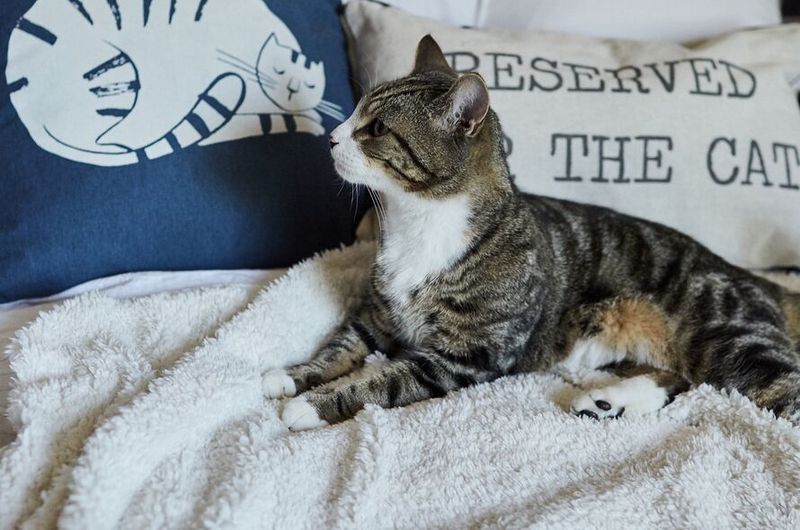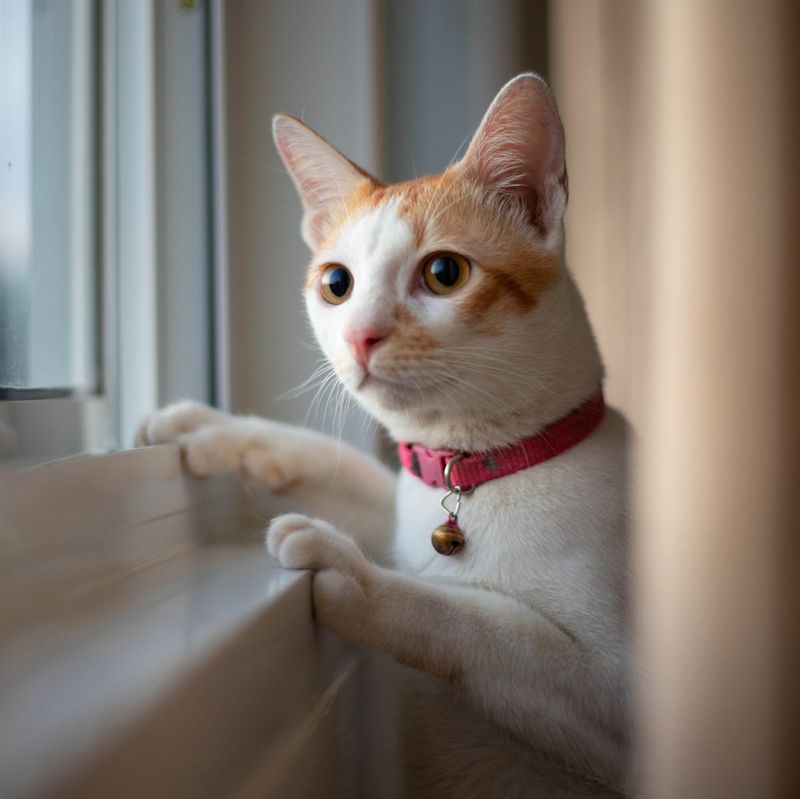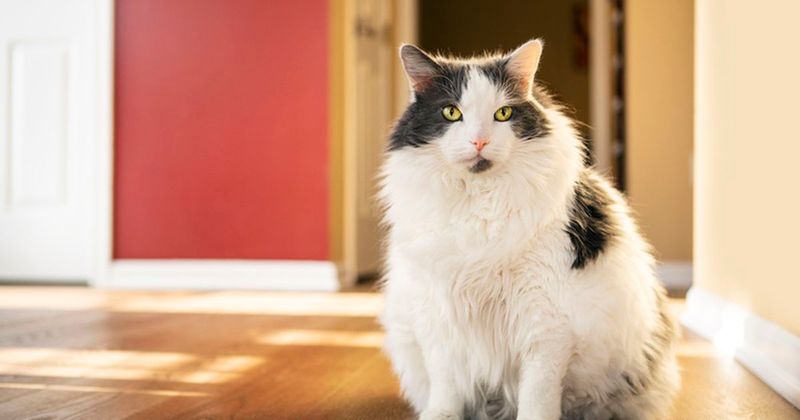📖 Table of Content:
- 1. Memory Masters That Never Forget
- 2. Problem-Solving Prowess
- 3. Masters of Manipulation
- 4. Emotional Intelligence Experts
- 5. Time-Keeping Talents
- 6. Social Network Navigators
- 7. Learning Through Observation
- 8. Selective Hearing Specialists
- 9. Cause-and-Effect Comprehension
- 10. Adaptability Champions
- 11. Pattern Recognition Pros
- 12. Strategic Planning Abilities
Cats have earned a reputation for their mysterious ways and independent nature. Behind those mesmerizing eyes lies a mind that’s constantly working, observing, and figuring things out. While they might spend their days napping in sunbeams or chasing invisible prey, our feline friends possess remarkable intelligence that often goes unnoticed. Here’s how your cat demonstrates she’s actually a furry genius in disguise.
1. Memory Masters That Never Forget
Cats possess extraordinary long-term memory capabilities that rival many animals. Your feline friend remembers exactly where you hide treats, which cabinet contains her food, and precisely what time you usually feed her—sometimes better than you do yourself!
Research shows cats can recall information for up to 10 years, storing details about people, places, and experiences. This explains why your cat might still hold a grudge about that vet visit from three years ago. Their spatial memory particularly shines when they navigate complex environments. A cat who’s visited a place once can often map the entire area in their mind, remembering every potential hiding spot and escape route.
2. Problem-Solving Prowess
Ever noticed how determined your cat becomes when faced with a challenge? Felines excel at figuring out complex puzzles, especially when rewards are involved. They’ll methodically test different approaches until they find what works. Scientists have documented cats using tools to reach objectives, like pulling strings to access food or manipulating simple mechanisms.
Your cat’s ability to open doors, cabinets, and supposedly “cat-proof” containers isn’t just persistence—it’s intelligence in action. The next time your cat seems stuck in a situation, give her time before intervening. You’ll likely witness an impressive display of problem-solving as she analyzes the situation and develops a solution.
3. Masters of Manipulation
That adorable meow that’s specifically reserved for when you’re in the kitchen? It’s no accident. Cats develop unique vocalizations they use exclusively with humans—not with other cats. They’ve learned exactly which sounds make you respond. Feline behavior experts have found that cats modify their communication tactics based on what gets results from their specific owners.
Your cat has essentially trained you to respond to her needs through careful observation of your reactions. Even those affectionate head bumps and purrs aren’t always simple signs of love. They’re often strategic moves to get what your cat wants—whether that’s food, attention, or access to a forbidden room.
4. Emotional Intelligence Experts
Contrary to their aloof reputation, cats are remarkably attuned to human emotions. Studies reveal they can distinguish between happy and angry human faces and often adjust their behavior accordingly. When you’re sad, your cat’s sudden appearance for cuddles isn’t coincidental.
Cats pick up on subtle changes in your voice, body language, and even scent that indicate your emotional state. Many cat owners report their feline companions becoming more attentive during illness or emotional distress. This sensitivity extends to household dynamics, too. Your cat likely knows exactly who in your home is most likely to offer treats, who will play the longest, and who to avoid when in a bad mood.
5. Time-Keeping Talents
Cats possess an uncanny internal clock that puts most humans to shame. Without any access to watches or calendars, your feline friend knows exactly when breakfast should be served, when you typically return from work, and when bedtime routines begin. This precise time-keeping ability stems from their natural hunting instincts.
Wild cats time their hunts to prey patterns, and domestic cats maintain this temporal intelligence. Some cats even adjust for daylight saving time changes within days—proving they’re not just mechanically responding to light patterns but truly tracking time. The next time your cat wakes you at exactly 6:00 AM for breakfast, remember it’s not just habit—it’s her sophisticated temporal awareness at work.
6. Social Network Navigators
With a sharp memory and keen awareness, cats navigate intricate social webs, recalling bonds with other animals and people. They recognize which local cats are allies, adversaries, or territorial owners, and even understand human social cues.
Cats often behave differently around various family members based on past interactions and observed dynamics. They’re constantly updating their social map. Researchers have found that cats can recognize human faces and voices of people they know, distinguishing between strangers and familiar individuals. This sophisticated social cognition helps them navigate their world and maximize beneficial relationships, especially with those most likely to provide food and comfort.
7. Learning Through Observation
Silent and patient, cats are master observers who absorb complex behaviors simply by watching. Your feline may spend hours studying how you open doors, turn on faucets, or sneak into off-limits places before trying it herself. This sharp observational learning is impressively advanced. Research shows cats learn not only from humans but from watching other cats too.
Some cats learn to use toilets, activate light switches, or open refrigerators after sufficient observation. The next time you catch your cat intently staring at you performing a routine task, remember she’s not just being curious—she’s studying, learning, and possibly planning how to replicate what you’re doing when you’re not looking.
8. Selective Hearing Specialists
Your cat’s apparent deafness when called isn’t a hearing problem—it’s a demonstration of sophisticated decision-making. Cats can hear sounds four times farther away than humans and detect higher frequencies too. When your cat “ignores” you, she’s actually processing your call, evaluating the tone, urgency, and potential benefits of responding, then making a conscious choice.
This selective attention showcases their ability to prioritize information and respond based on their own interests. Experiments confirm cats recognize their names but choose when to acknowledge them. This selective response isn’t stubbornness but evidence of independent thinking—they’re weighing options and making decisions rather than automatically obeying commands like some other pets.
9. Cause-and-Effect Comprehension
With impressive clarity, cats understand cause and effect, making connections between what they do and what happens next. Whether it’s tapping a spot to release a treat or sending things tumbling to grab your focus, they’re quick learners—even with mechanical devices.
Many cats figure out how doorknobs function or how to trigger automatic feeders. They recognize that certain actions produce reliable results. Feline cause-and-effect comprehension even includes sound relationships. Cats learn which sounds precede important events—like the specific noise your car makes when pulling into the driveway or the sound of a can opener that might mean dinner. This cognitive ability helps them predict and prepare for what’s coming next.
10. Adaptability Champions
Cats demonstrate remarkable intelligence through their adaptability to new environments and situations. Unlike many animals who struggle with change, cats quickly assess new surroundings and adjust their behavior accordingly. Moving to a new home highlights this adaptive intelligence. While initially cautious, cats methodically explore, creating mental maps and identifying safe zones.
They rapidly learn new routines and adjust to different living arrangements. This adaptability extends to human lifestyle changes, too. Cats modify their behavior when new people or pets join the household, when daily schedules shift, or when rules change. Their flexible thinking allows them to thrive across diverse environments—from busy households to quiet apartments—by constantly updating their understanding of how things work.
11. Pattern Recognition Pros
Pattern recognition comes naturally to cats, who keenly observe the rhythms of their environment. They remember your sleeping schedules and guest visits, and even anticipate your departure by noticing subtle cues like grabbing shoes or keys.
Many begin responding to these patterns before you’ve consciously started your departure routine. The hunting instinct sharpens this ability further. Cats track patterns in prey movement, learning optimal times and locations for successful hunting. Your indoor cat applies these same pattern-tracking skills to toys, household activities, and your behavior—constantly updating her predictions based on observed patterns.
12. Strategic Planning Abilities
Far from acting on impulse, cats demonstrate thoughtful planning. Watch as your feline studies a toy, calculating the best path and adjusting her approach before striking. This clever strategy extends to social settings, where cats weigh previous encounters to decide when and how to engage with others.
They wait for optimal moments to request attention or treats. Many cat owners report their pets showing remarkable patience—waiting for hours in strategic positions to ambush toys or access restricted areas. This delayed gratification and tactical positioning reveal cognitive abilities far beyond what most people attribute to cats, showing they can formulate multi-step plans to achieve goals.
